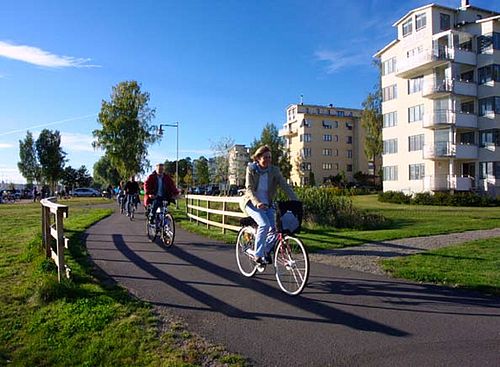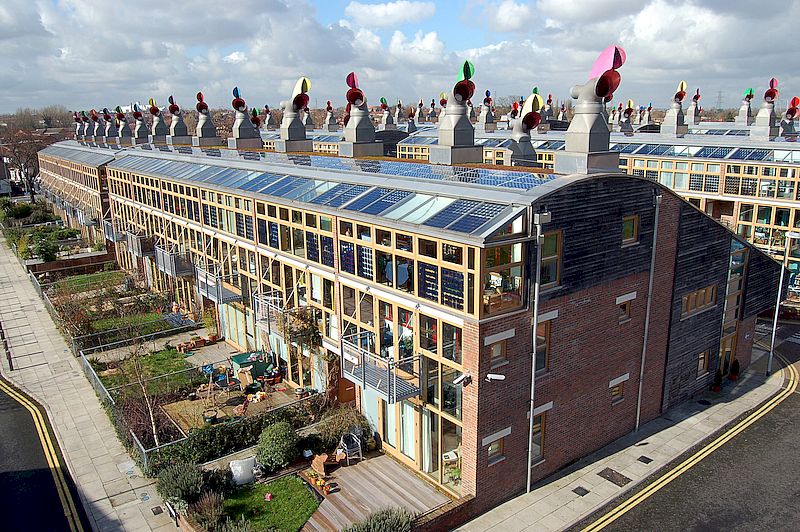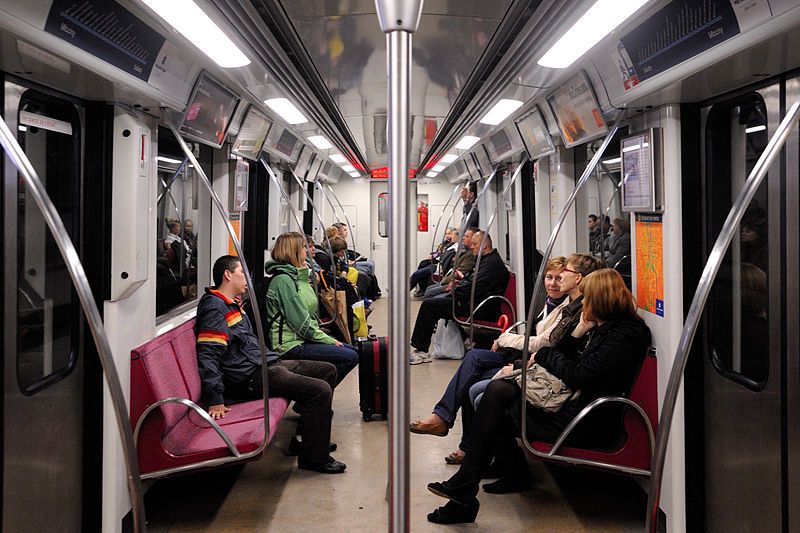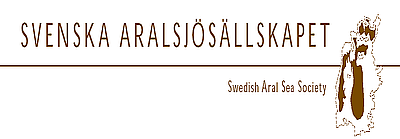4b.
The sustainable city
 Biking in the city of Västerås, Sweden
Biking in the city of Västerås, Sweden
A city may be regarded as an ecosystem. Just as any ecosystem the city needs energy, there is a flow of resources into the system, such as food and other resources, and there is waste to be taken care of. All these aspects need to be made in a sustainable way, that is, to use the physical and biological conditions for sustainability. (See also Chapter 1c). This approach asks for recycling of all or most resource flows, and the use of renewable energy and other resources.
It is possible to make resource management more efficient in a densely populated environment. The heating of buildings, distribution of water, and collection of wastewaters and the management of solid waste is made more efficient in a city. Thus, district heating, wastewater purification, and solid waste recycling and management are essential skills in a future sustainable city. The most advanced cities may even be or work to become energy self-sufficient.
The energy provided to the city is of three kinds: Heat to keep buildings warm and nice during cold days; electricity to run all kinds of machinery, to provide lighting etc; and finally fuel, e.g. for transport. In district heating, where a single power plant is providing hot water to the entire city though a system of pipelines, is by far the most efficient way to heat most cities. It is also a better system for cleaning flue gases, obviously better than a multitude of single-house boilers. It also offers co-generation: that is, the plants may produce both heat and electricity with an efficiency of fuel use up to some 85%. Its sustainability then depends on the fuel used. Waste incineration may account for a considerable part in most cities. Other fuels include peat and biofuels such as wood chips. The buildings are also important as they may be more or less energy efficient as well as providing their own heat (see below). Other sources of electricity may be either local (e.g. solar cells) or distant (e.g. large hydropower plants).
 BedZed is UK's largest eco-village. CC Photo: Tom Chance.
BedZed is UK's largest eco-village. CC Photo: Tom Chance.
The urban water is extracted from ground or surface water. It needs to be used efficiently (less than 100-200 lit/day/capita) as it takes some energy and sometimes chemicals to produce it. Wastewater contains effluents from toilets and kitchen, and wastewater treatment is therefore an important part of the nutrient flows. The wastewater treatment produces an organic residual, the sludge. It should ideally go back to agricultural fields as an important source of phosphorus, but may also be used for biogas production.
The most important to say on waste is that it should be avoided. The waste hierarchy says, “reduce, reuse, recycle”. In households, source separation of waste is essential to make recycling possible. Organic waste may go to composting, biogas production or waste incineration. (See further Chapter 5c).
A central issue in habitation and cities are the buildings. These are not only the homes of the inhabitants and therefore a key issue for social sustainability, but they are also key components in the resource flow of a city. They go from simple shelters to large and well functioning houses. In the global south, access to a decent home is often the most critical concern. In the Baltic Sea region, almost everyone has a decent home, but there is still much to be done to improve the performance of buildings. Energy performance goes from passive and low energy houses to badly functioning buildings. Especially in countries where fossil fuels dominate energy supply, it is important that the energy performance of buildings is improved. Houses may become very old, and the reuse and retrofitting of them are important skills for sustainability. In the best case, buildings may contribute significantly to create its own physical resources. Solar panels on roofs may produce much of the hot water needed, and solar cells some of the electricity.
 The Warsaw Metro
The Warsaw Metro
For cities, a well functioning traffic and transport system, consisting of a clever mix of modes, is a key to improved sustainability. The private car now dominating and congesting the traffic scapes of many cities could only have a limited role in this mix. Public alternatives, such as metro, buses, trams and sometimes boats, are essential. Walking and cycling should be promoted, since they are good for health, economy, and environment. The electric car, now developed, is expected to dominate car traffic in the future. The electric motor is some 4 times more efficient than combustion and much less polluting. In addition, the need for transport, both of persons and goods, should be reduced, for example by using more information technologies, and increasing the local share of the economy.
There is in most cities a debate on green contra dense. Greenery in cities plays an important role as they provide a number of ecosystem services. Most significant is that they allow the inhabitants to enjoy the green areas for their wellbeing – proven in much research – and social services, such as recreation, play, culture, beauty, sports, etc. They also contribute to better air (ventilation) and temperature regulation. Finally, biological diversity, especially trees, for the young generation to get to know biology while in the city. Greenery includes not only parks but also trees, bushes and small lawns along streets, roads, and parking areas etc. Green areas may also in addition be created on roofs, both for covering the house and for cultivation of food. Surface water – ponds, rivers, lakes, and coasts – is often included in greenery and is an important element in many cities, especially in the Baltic Sea region, and living along water is attractive.
Materials for session 4b
Basic level
- Read A Sustainable Baltic Region, session 7, chapter 3: City Metabolism – Resource Flow Management.
- Read BUUF Guidebook 2: Energy Management, chapter 3: Energy Efficient Houses.
- Read BUUF Guidebook 5: Green Structures in the Sustainable City, chapter 2: Urban Green Structure – A hidden resource.
- Read BUUF Guidebook 4: Traffic and Transport, chapter 6: Policy Measures for Sustainable Urban Transport.
- Read A Sustainable Baltic Sea Region, session 7, chapter 8: Approaches to Sustainable Habitation.
- Get to know Güssing in Austria as a brilliant success story.
- The Model Region of Güssing – an Example of the Austrian Grassroots Strategy for Energy Independence.
- Güssing (YouTube film) as a Model for regional Economic Improvement.
Medium level (widening)
- Study the resource base of sustainability in cities in Superbs Case Studies, Volume 1: Basic Patterns of Sustainability, chapter 4: The City as a Sustainable Living System.
- Study Urbanism, Chapter 10 in Challenges of Sustainable Development in Poland, edited by Jakub Kronenberg and Tomasz Bergier.
Advanced level (deepening)
- Study the situation in a chosen city by collecting data on energy, water, waste, traffic, and greenery. Data on several cities are found in the BUUF project city reports.
BUUF City Status Report 1: Water Management
BUUF City Status Report 2: Energy Management
BUUF City Status Report 3: Waste Management
BUUF City Status Report 4: Traffic and Transport
BUUF City Status Report 5: Urban Green Structures
Additional Material
The US based company Intelligent Power Partners, which works with how municipalities and micro-grids acquire, distribute, and use electricity, has produced several films on sustainable urban development. Some of the BUP teachers like to use them for their classes on urban development. They show efficiently the problems of conversion of cities to sustainability, however they rely very much on high-tech solution. Please see this link to YouTube: https://www.youtube.com/user/jkellyx6.
References
Andersson, H. (ed.).1997. Cities and Communities. A Sustainable Baltic Region. Session 7. Baltic University Press, Uppsala.
Engström, C. J. (ed.). 2001. The City and City Life. Superbs Book 1. Baltic University Press., Uppsala.
Jakobsson, C. and J. Lemming (eds.). 2007. Energy Management. Baltic University Urban Forum. Urban Management Guidebook II. Baltic University Press, Uppsala.
Kronenberg, J. and T. Bergier (eds.). 2010. Challenges of Sustainable Development in Poland. Sendzimir Foundation, Centre for Systems Solution, Wrocław, Poland.
Rydén, L. (ed.). 2002. Basic Patterns of Sustainability. Superbs Case Studies, Volume 1. Baltic University Press. Uppsala.
Rydén, L. (ed.). 2007. Traffic and Transport. Baltic University Urban Forum. Urban Management Guidebook IV. Baltic University Press, Uppsala.
Wlodarczyk. D. (ed.). 2007. Green Structure in Development of the Sustainable City. Baltic University Urban Forum. Urban Management Guidebook V. Baltic University Press, Uppsala.
BUP Sustainable Development Course
